It’s winter, and if you plan to ride your horse heavily all winter, even in a very cold climate, he will get a sweaty coat that takes hours to dry and can give him a nasty chill. This is where the miracle of body clipping for winter comes in! You can ride all you want, and your horse will be able to sweat and dry quickly, and you will have the added advantage of less muddy and/or dusty hair to groom before saddling up.
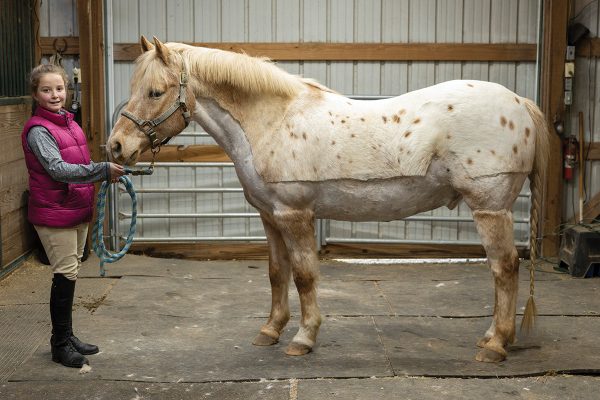
Yet winter clipping your horse can be a scary task. You never want to end up with a horse that looks worse than when you started! Here are 10 tips to help ensure you’ll be happy with the results.
1. Buy new blades or have your blades professionally sharpened at a local tack shop or hardware store. Fresh or sharpened blades will do the work in a fraction of the time of dull blades. Dull blades also create uneven clipper track marks. Blades that have been used many times without sharpening won’t clip much of anything at all.
2. Nothing ruins a clip job more than a dirty horse. If the weather is warm enough or you have access to heated water, give your horse a deep shampoo with a thorough rinse. Towel him thoroughly to help him dry, then put on a cooler to keep him warm while he finishes drying. Finally, spritz him with coat polish to help your clippers glide through the hair.
3. Choose the right clippers for the job. If you’re body clipping your horse, you’ll need a set of heavy-duty clippers with a motor made for the job. Smaller clippers, like the type used to groom dogs, can be used on your horse’s face and lower legs.
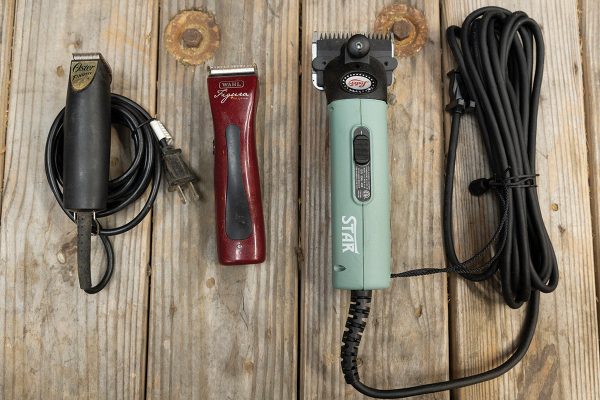
4. Use blade cleaner specifically made for clippers. Every few minutes when you notice hair building up on the blades, switch off the clippers and use a soft body brush to knock off the hair. Then turn them back on and spray or dip the very tips of the blades in blade wash made specially for this job.
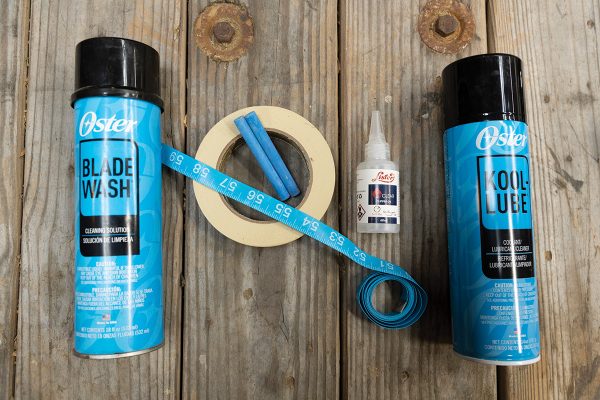
5. Use a proper oil just for clippers. Follow the manufacturer’s suggestions on where and how often to use the oil. If your clippers aren’t kept oiled, they will overheat and stop working, as well as leaving tracks in the hair.
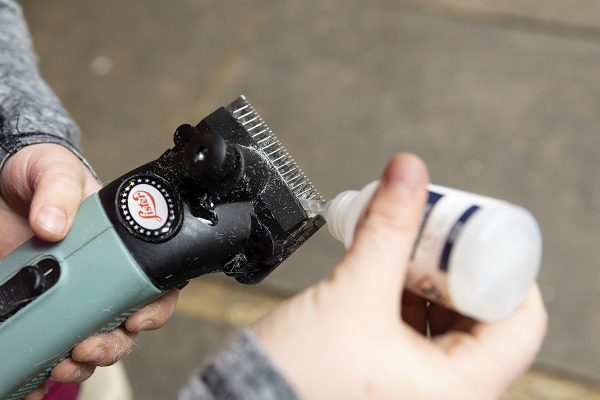
6. Be safe. First, tie or cross-tie your horse in a safe, quiet place where you have room to move around. Use a heavy-duty extension cord. Make sure you can’t get trapped between your horse and a fence or wall. If your horse is hypersensitive to body clipping, turn the job over to a professional groom for your own safety.
7. If doing a partial clip, outline the borders with chalk or masking tape. Measure first with a cloth tape. For example, note how far your border is from the withers and the hip. This way, you won’t accidentally end up with one side of your horse clipped higher or lower than the opposite side.
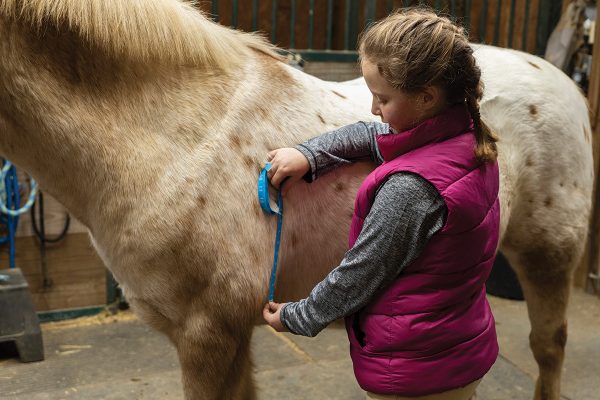
8. Hold the clippers so the base or bottom of the blades lay flat on top of your horse’s coat. Cut against the growth of the hair with steady, even pressure.
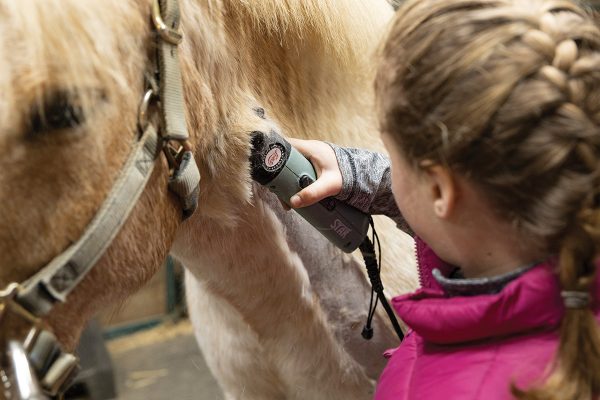
9. Watch your horse’s behavior. If your horse starts to pin his ears, flinch, or wrinkle his skin, the clippers could be getting hot. Run them through the blade wash and oil them. Then turn them off so they can cool before re-starting. There are also blade-cooling sprays available that work almost instantly.
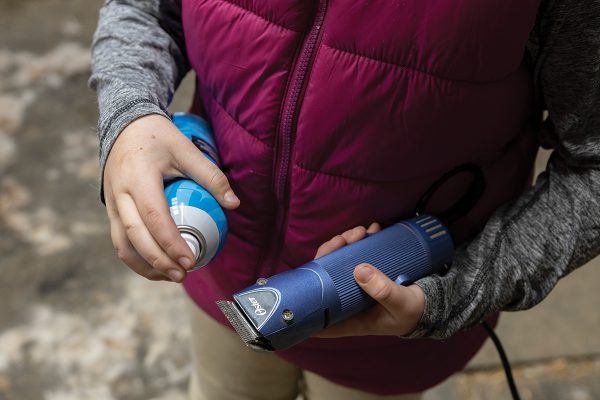
10. Keep vents clean. Large body clippers, and many of the smaller types, have air vents. They’re covered by small metal screens. Remember to brush clipped hair away from the vents frequently while clipping so the motor doesn’t overheat.
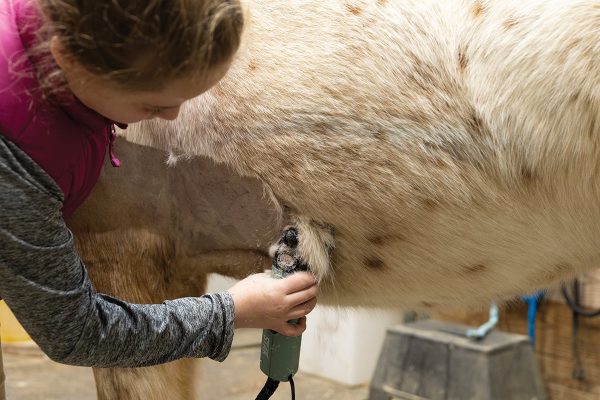
When you’re done, step back and survey your work for any uneven edges. Does your horse’s body look like a bunch of messy railroad tracks? Try clipping those areas again, but clip across the lines. That usually helps to blend away any clipper tracks.
Once you’re done touching up, you can be proud of your work. Congratulations, your horse is ready to ride all winter long!
Blanketing Your Horse After Winter Clipping
Winter clipping removes your horse’s natural protection against winter weather—now he’ll need a blanket. Choose one with the right amount of fill (insulation) for your environment. If he gets turned out for part or all of the day, he’ll need a waterproof blanket or top sheet in case it rains or snows.
If your weather changes a lot, you may need several blankets: light, medium, and heavy. Very cold climates require neck hoods for fully clipped horses, as well. Partially clipped horses can usually get by with just a mid-weight blanket or even a rain sheet if the climate is mild.
This article about winter clipping your horse appeared in the Winter 2022 issue of Young Rider magazine. Click here to subscribe!


